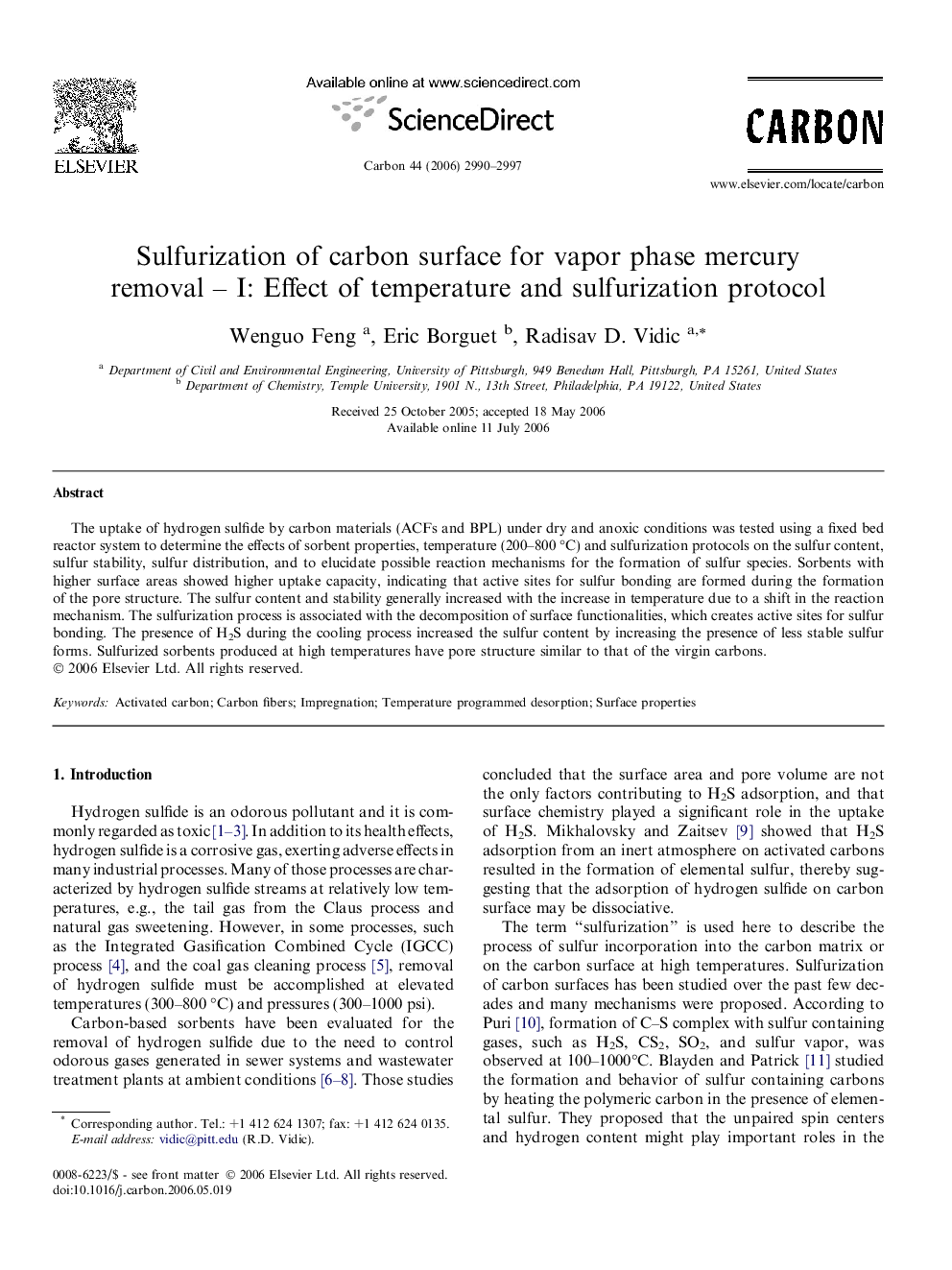| Article ID | Journal | Published Year | Pages | File Type |
|---|---|---|---|---|
| 1419206 | Carbon | 2006 | 8 Pages |
The uptake of hydrogen sulfide by carbon materials (ACFs and BPL) under dry and anoxic conditions was tested using a fixed bed reactor system to determine the effects of sorbent properties, temperature (200–800 °C) and sulfurization protocols on the sulfur content, sulfur stability, sulfur distribution, and to elucidate possible reaction mechanisms for the formation of sulfur species. Sorbents with higher surface areas showed higher uptake capacity, indicating that active sites for sulfur bonding are formed during the formation of the pore structure. The sulfur content and stability generally increased with the increase in temperature due to a shift in the reaction mechanism. The sulfurization process is associated with the decomposition of surface functionalities, which creates active sites for sulfur bonding. The presence of H2S during the cooling process increased the sulfur content by increasing the presence of less stable sulfur forms. Sulfurized sorbents produced at high temperatures have pore structure similar to that of the virgin carbons.
